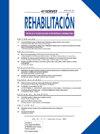应用虚拟现实技术进行康复治疗可提高中风后患者的功能能力。系统回顾与荟萃分析
Q3 Medicine
引用次数: 0
摘要
虚拟现实(VR)是脑卒中后患者康复领域的新兴技术。本研究旨在系统探讨VR康复方案对脑卒中患者功能能力的影响。我们进行了系统回顾和荟萃分析。这些搜索在PubMed/Medline、Web of Science、PEDro和OTSeeker上进行,截止到2024年10月。采用Downs和Black量表评估方法学质量,并使用Cochrane随机试验风险偏倚工具(RoB 2)评估偏倚风险。共有4项研究符合纳入标准。在使用Wii Fit、ARMEO Spring 1.1、康复游戏系统和ArmAble™的研究中,VR干预的类型有所不同。荟萃分析显示,与对照组相比,VR组在功能能力方面有统计学意义的改善。方法学质量均值为中等质量水平。虚拟现实干预似乎是一种很有前途的治疗系统,用于中风后患者的功能能力康复。本文章由计算机程序翻译,如有差异,请以英文原文为准。
Rehabilitation applied with virtual reality improves functional capacity in post-stroke patients. A systematic review and meta-analysis
Virtual reality (VR) is emerging technologies in the field of rehabilitation of post-stroke patients. The aim of this study was to systematically explore the effects of VR rehabilitation program on functional capacity of stroke patients. We conducted a systematic review and meta-analysis. The searches were carried out in the PubMed/Medline, Web of Science, PEDro and OTSeeker to October 2024. Methodological quality was assessed using the Downs and Black scale and the Version 2 of the Cochrane risk-of-bias tool for randomized trials (RoB 2) was used to assess risk of bias. A total of 4 studies met the inclusion criteria. The type of VR intervention varied among studies using Wii Fit, ARMEO Spring 1.1, Rehabilitation Gaming System and ArmAble™. The meta-analysis indicated that the VR group showed statistically significant improvement in functional ability versus control group. The methodological quality mean was moderate quality level. VR interventions seem to be a promising therapeutic system for functional capacity rehabilitation in people with post-stroke.
求助全文
通过发布文献求助,成功后即可免费获取论文全文。
去求助
来源期刊

Rehabilitacion
Medicine-Rehabilitation
CiteScore
0.80
自引率
0.00%
发文量
63
期刊介绍:
La revista que es desde hace más de 40 años la publicación oficial de la Sociedad Española de Rehabilitación y referente de la mayoría de las Sociedades de la Especialidad de los países americanos de habla hispana. Se publican 5 números pluritemáticos al año y uno monográfico sobre un tema del mayor interés y actualidad designado por el consejo de redacción.
 求助内容:
求助内容: 应助结果提醒方式:
应助结果提醒方式:


